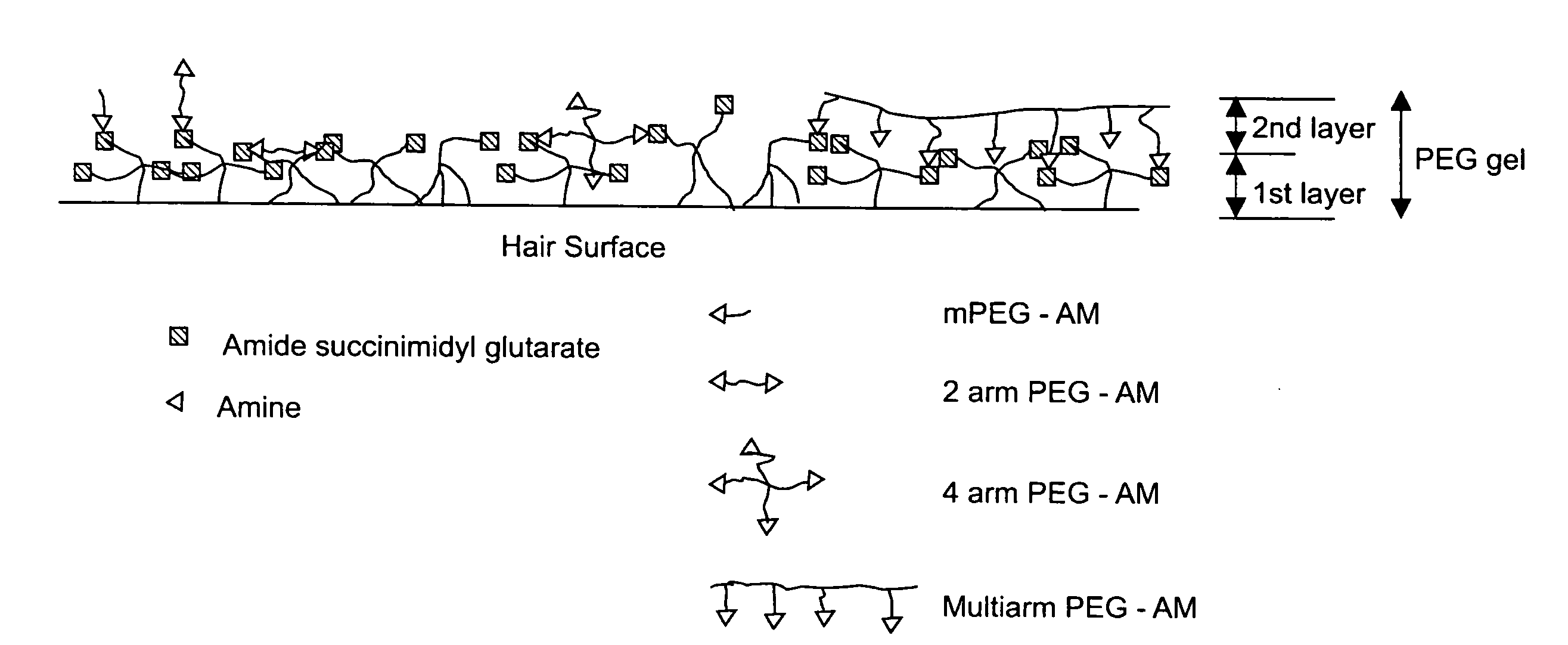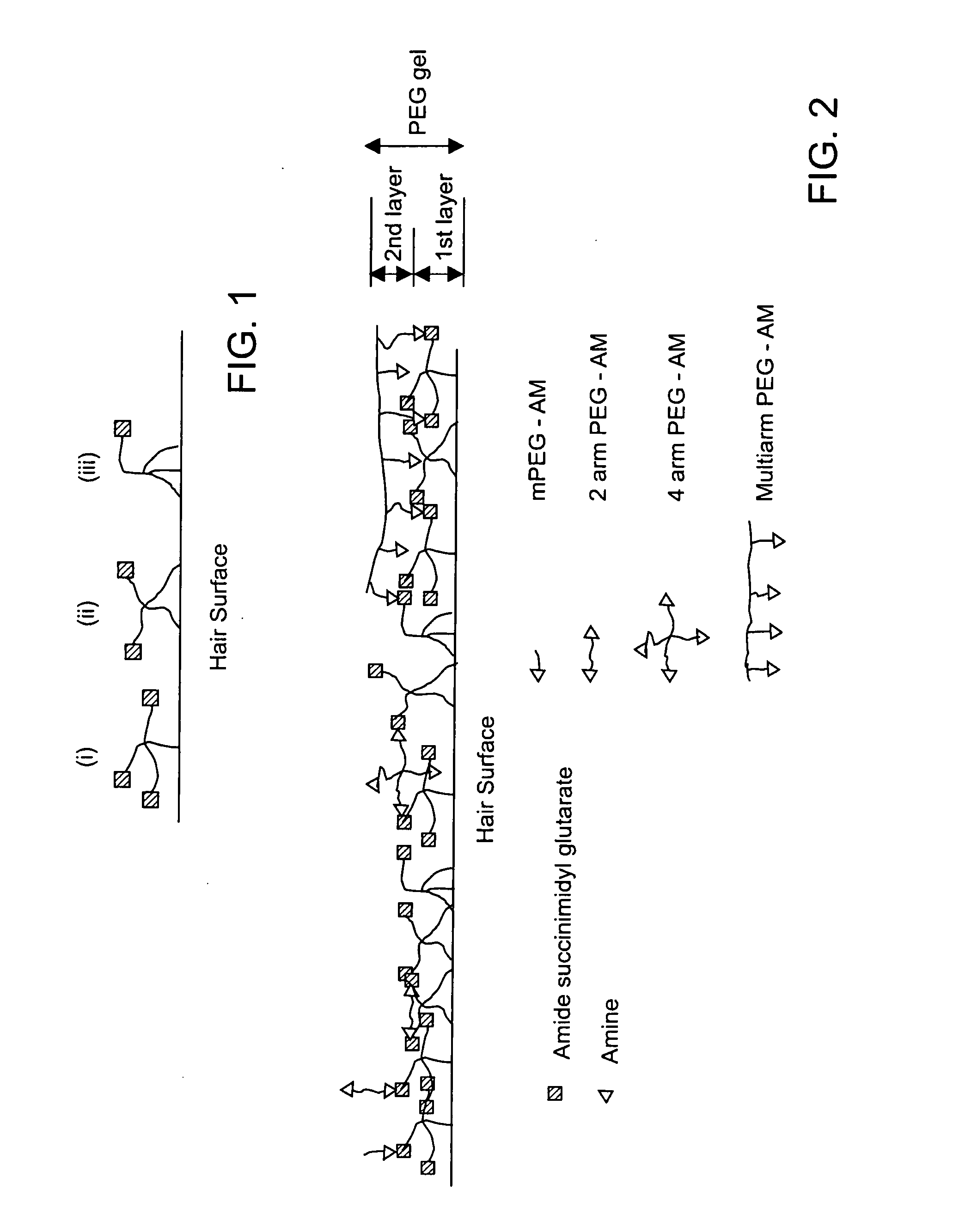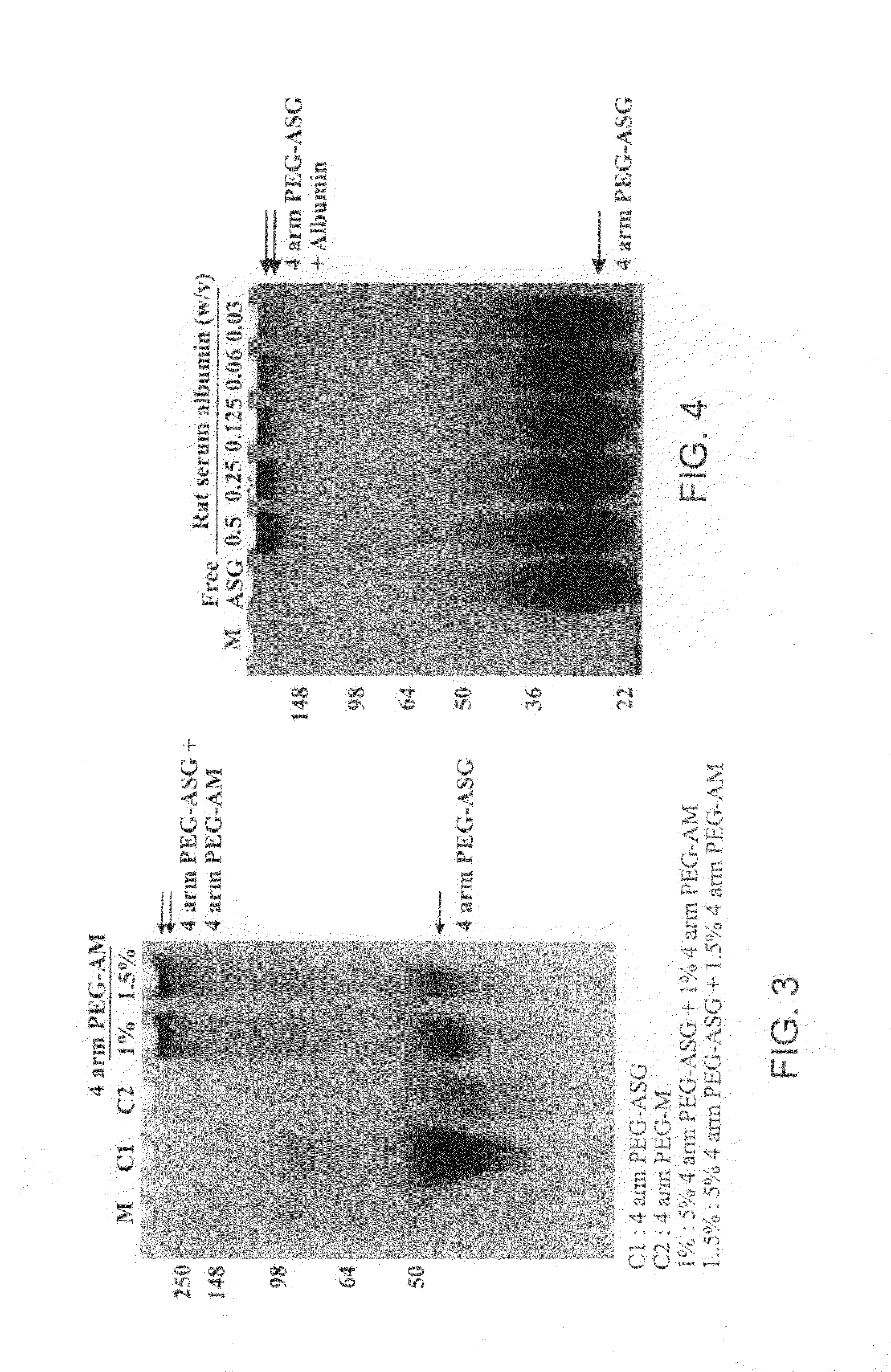Hair treatment composition, hair treatment agent and method for treating hair by using the same
a hair treatment composition and composition technology, applied in the field of hair treatment compositions, can solve the problems of hair thickness thinning, hair loss, hair thinning, etc., and achieve the effect of increasing the amount of peg hydrogels
- Summary
- Abstract
- Description
- Claims
- Application Information
AI Technical Summary
Benefits of technology
Problems solved by technology
Method used
Image
Examples
example 1
Formation of Polyethylene Glycol Hydrogels
[0086]5% w / v 4-arm polyethylene glycol derivative containing polyethylene glycol amide succinimidyl glutarate (referred to ‘4-arm PEG-ASG,’ below, manufactured by SUNBIO INC. (Korea), P4ASG-20) (MW 20,000 daltons) was dissolved in 20 mM phosphate buffer with pH 9 to prepare a solution. 4-arm PEG-AM (MW 20,000 daltons) solution with concentrations described in Table 1 below was separately prepared in the same buffer solution. Two solutions were mixed in the same volume (500 μl) and allowed to stand for 40 minutes. The results were represented in the following Table 1.
TABLE 1Concentration (w / v) of 4-arm PEG-AM1%1.5%2%3%4%5%Visual PEG hydrogels−−−++++: Visual PEG hydrogels are observed.−: Visual PEG hydrogels are not observed.
[0087]As shown in Table 1 above, when the concentration of 4-arm PEG-AM was 3% or higher, visual PEG hydrogels were appeared. In case of 2% PEG-AM, the viscosity appeared high compared with 1% and 1.5% PEG-AM, but visual h...
example 2
Formation of Hydrogels in Polyethylene Glycol Mouse Serum Protein
[0088]3% w / v 4-arm PEG-ASG (MW 20,000 daltons) was dissolved in 20 mM phosphate buffer with pH 9 to prepare a solution. Mouse serum protein solution with concentrations of 0.03 to 0.5% was separately prepared in the same buffer solution. Two solutions were mixed in the same volume (500 μl) and allowed to stand for 40 minutes. Hydrogels of polyethylene glycol-serum protein analyzed by the same method as Example 1 were represented in FIG. 4.
[0089]As shown in FIG. 4, the formation of visual hydrogels was not confirmed in mouse serum protein with low concentration, but the formation of hydrogels having a size of less than micrometers was confirmed by SDS-PAGE analysis.
example 3
Formation of Hydrogels in Polyethylene Glycol-Chitosan
[0090]3% w / v 4-arm PEG-ASG (MW 20,000 daltons) was dissolved in 20 mM phosphate buffer with pH 9 to prepare a solution. Chitosan (MW 200,000 daltons) solution (pH 5.0) with concentrations of 0.015 to 2% was separately prepared in the same buffer solution. Two solutions were mixed in the same volume (500 μl) and allowed to stand for 40 minutes. The resulting product was subjected to SDS-PAGE analysis and Titrisol® stain analysis, and the formed hydrogels of polyethylene glycol-chitosan are represented in FIG. 5. When the concentration of chitosan solution was 1% or higher, visual hydrogels were formed.
PUM
| Property | Measurement | Unit |
|---|---|---|
| thickness | aaaaa | aaaaa |
| thickness | aaaaa | aaaaa |
| viscosity | aaaaa | aaaaa |
Abstract
Description
Claims
Application Information
 Login to View More
Login to View More - R&D
- Intellectual Property
- Life Sciences
- Materials
- Tech Scout
- Unparalleled Data Quality
- Higher Quality Content
- 60% Fewer Hallucinations
Browse by: Latest US Patents, China's latest patents, Technical Efficacy Thesaurus, Application Domain, Technology Topic, Popular Technical Reports.
© 2025 PatSnap. All rights reserved.Legal|Privacy policy|Modern Slavery Act Transparency Statement|Sitemap|About US| Contact US: help@patsnap.com



